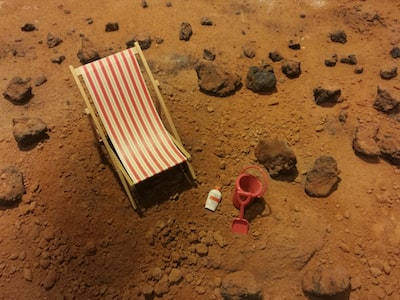Mars Terraforming: A Possibility or Science Fiction?
In this blog post, we will dive into a subject that has intrigued scientists and space enthusiasts alike for decades: Mars Terraforming. The concept of molding an alien planet into a habitable world for humans serves as an exciting prospect and forms the basis of numerous scientific, philosophical, and even ethical discussions. In the brief outline that follows, we will explore:
- The Possibility of Terraforming Mars
- Various Aspects Involved in the Terraforming of Mars
- The feasibility of Habitation on Mars
- The Processes Involved in Mars Terraforming
- The Length of Time it would take to Terraform The Red Planet
Join us as we traverse through alien terrain and explore the captivating reality and possibilities underlying the concept of Mars Terraforming.
Mars Terraforming: Is it possible?
Answering the prevailing question, “is it possible to terraform Mars“, isn’t simple. Theoretical studies and debates among the scientific community continue. The answer appears daunting but not, by all accounts, impossible.
Here are some significant obstacles standing in our way:
- Temperatures on Mars can drop as low as a chilly -125 degrees Celsius, which is inhospitable for human life.
- There’s an absence of liquid water on the surface.
- The thin atmosphere lets through too much harmful solar radiation.
These factors make it challenging for anything to survive, but progress in scientific research showcases potential remedies.
A Deep Dive into Terraforming
The term “terraform Mars” describes the hypothetical process of deliberately modifying Mars’s conditions to make it hospitable for Earth-like life. It’s an idea that comes straight out of science fiction, but some planetary scientists believe it could become a reality.
Expanding Mars’s atmosphere is our fundamental challenge, with several proposed ideas. One such proposal involves releasing greenhouse gasses to warm the planet, melting the ice caps and releasing the carbon dioxide trapped within them.
Furthermore, Professor Christopher P. McKay at NASA’s Ames Research Center has suggested that introducing ammonia or even setting up nuclear power plants might work. These plants would convert the Mars’ native frozen carbon dioxide into a warming gas.
Understanding the Underlying Process
For the process to succeed, we must comprehend how to play terraforming Mars strategically. Enhancing the Martian environment necessitates coordinated efforts over a prolonged period. The goal involves artificially pumping up Mars’ atmosphere, creating a greenhouse effect so the planet could retain more solar heat.
Additionally, “gray Mars,” a stage of terraformed Mars, might be achievable by importing orbiting mirrors to reflect sunlight onto the surface.
Finally, it’s important to recognize that determining the feasibility of terraforming Mars does not solely rely on technical capabilities— ethical implications need careful consideration as well.
Could Mars be Terraformed?
Nobody said changing the nature of an alien planet would be easy. However, as our technological abilities continue to advance, a ‘terraformed Mars‘ might be possible in the future.
First, effective terraforming requires an understanding of Mars’s geography. Generating a detailed terraformed Mars map would allow scientists to pinpoint locations for ice caps extraction, reflective mirrors placement, and dormant volcano activation for greenhouse gas production.
Moreover, creating habitation on Mars isn’t just about making it livable; it involves the establishment of self-sustaining ecosystems as well. If we can overcome these hurdles and establish sustainable life, it will form a pillar for future space colonization.
Habitation on Mars: What Would it Look Like?
One might wonder what life might look like on a terraformed Mars. The thin atmosphere, colder temperatures, and weaker gravity would make everyday life different from what we experience on Earth. For starters, Martian settlers might need to live underground or within special habitats to shield against harmful radiation.
However, the successful habitation of Mars would revolutionize our understanding of life’s possibilities beyond Planet Earth. Habitation could mean cultivating crops in Martian soil or making use of in-situ resources for water and oxygen.
Such Martian life would vastly differ from what we are familiar with, and it could have significant implications for how we think about extraterrestrial life.
The Pros and Cons of Terraforming Mars
The benefits of transforming Mars into a second Earth are quite attractive, ranging from providing a solution for Earth’s growing population to becoming a safehouse if a catastrophic event occurs on Earth. However, along with these exciting prospects, there are genuine concerns:
- Impact on Mars’ Indigenous Life: If there is microbial life on Mars, would terraforming wipe it out? The ethical ramifications are immense.
- The Process Could be Slow: From McKay’s heating and cooling calculations, it could take thousands— if not millions of years to reach a breathable atmosphere.
- Financial Investment: Funding such an ambitious project is another obstacle.
- Impact on Society: It may cause divisions within society — those who favor terraforming for the survival of human civilization and those who believe human inherent problems would follow us to Mars.

How to Play Terraforming Mars: The Realities
Understanding how to play terraforming Mars involves realizing that the game has high stakes. The reality remains that while we continue to dream and plan, there are currently no practical means to initiate this process.
Though it could be theoretically possible, the lack of current technology is a hurdle in turning dreams into reality. However, Mars missions and research aren’t slowing down— they’re accelerating. With companies like SpaceX pushing the boundaries of what is possible in space travel, the future might hold the answers to pressing questions about Mars terraforming.
To Conclude: The Future of Mars Terraforming
As of now, the question “how long would it take to terraform Mars” may remain unanswered, and with the current scientific understanding and technological capabilities, the concept of Mars terraforming resides predominantly within the realm of theoretical possibility and scientific fiction.
However, this hasn’t hindered our quest for knowledge and our undying fascination for the red planet. It’s an aspiration that drives current Mars missions and will continue to inspire future ones. Its fulfillment might not be within our generation’s reach, but we are paving the way for the possibility that future generations might set foot and maybe even thrive on Mars.
In the end, the dream to venture out, to conquer new worlds, to ensure the survival of our species, connects back to our exploratory nature and quest for discovery. Whether we will ever achieve Mars terraforming or not, we are bound to keep trying — advancing science, testing new ideas, and reaching for the stars.







